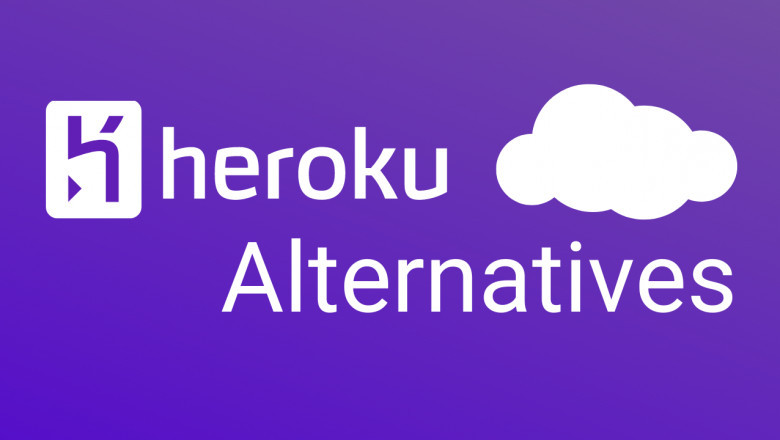views
When Heroku first launched, it revolutionized the developer experience. With simple Git-based deployment and built-in scaling, Heroku made it easy for startups and developers to bring applications online without the burden of infrastructure management. However, as applications grow and demands increase, many teams now find Heroku limiting—especially in areas like pricing, customization, and compliance. If you're looking for more scalable, cost-effective, or flexible options, it's time to consider heroku alternatives.
At Kapstan, we help teams make smooth transitions from platforms like Heroku to solutions that better align with modern DevOps practices. Here’s a breakdown of the top alternatives and what makes them stand out.
1. Render: The Developer-Friendly PaaS
Render offers a similar developer experience to Heroku but with more generous resource limits and a simplified pricing model. With support for background workers, cron jobs, and pull request previews, Render covers many of the pain points Heroku users face.
Why teams migrate to Render:
-
Free tiers with more RAM and bandwidth
-
Easier autoscaling
-
Better performance at a lower cost
Kapstan’s verdict: Ideal for startups and developers looking to keep the Heroku-style ease but with more breathing room.
2. Railway: Simplicity Meets Modern Tooling
Railway markets itself as “infrastructure for the 99%.” It combines ease of use with infrastructure-as-code options and project templating. For teams that want to quickly spin up environments without deep DevOps knowledge, Railway is an excellent choice.
Key features:
-
One-click deployments
-
Built-in database provisioning
-
Slick CLI and GitHub integration
Kapstan’s verdict: Perfect for rapid prototyping and MVPs, with a clean upgrade path as teams grow.
3. Fly.io: For Global Edge Deployments
If your application requires low latency and edge deployment, Fly.io is a compelling alternative. It lets you run apps close to users around the globe without much configuration effort.
Strengths:
-
Global app deployment by default
-
Persistent storage support
-
Docker-based deployment
Kapstan’s verdict: Great for teams looking to optimize response times and scale geographically.
4. Google Cloud Run: Serverless Containers, Minimal Management
Cloud Run abstracts away servers entirely, letting you run containers that scale down to zero when not in use. It’s an excellent fit for microservices and modern event-driven applications.
Why Cloud Run stands out:
-
Pay-per-use pricing
-
Seamless CI/CD integration with GitHub
-
Strong integration with other GCP services
Kapstan’s verdict: Best for teams that are cloud-native and want a serverless approach with enterprise-grade support.
5. Amazon ECS or EKS: Enterprise-Grade Container Orchestration
For organizations needing tighter control, higher scalability, or complex networking setups, AWS's Elastic Container Service (ECS) or Elastic Kubernetes Service (EKS) provide powerful alternatives.
Highlights:
-
Deep AWS ecosystem integration
-
Granular control over networking and IAM
-
Scales to support complex workloads
Kapstan’s verdict: Recommended for DevOps teams managing large-scale or regulated applications.
6. Vercel & Netlify: Best for Frontend-Heavy Apps
If your application is primarily frontend (e.g., Next.js or React-based), Vercel and Netlify offer Heroku alternatives focused on performance, speed, and simplicity. They include out-of-the-box CI/CD, CDN, and edge functions.
Advantages:
-
Blazing-fast static hosting
-
Built-in Git-based deployment
-
Serverless function support
Kapstan’s verdict: Great for frontend-focused teams that want fast builds, previews, and global performance.
Why Choose Kapstan for Your Heroku Migration?
At Kapstan, we specialize in helping companies evolve beyond Heroku. Whether you're aiming to improve reliability, reduce cloud spend, or adopt containerization, we tailor migration paths that align with your DevOps maturity and business goals.
Our services include:
-
Platform evaluation and recommendations
-
Infrastructure as code setup with Terraform or Pulumi
-
CI/CD pipeline creation and optimization
-
Observability and monitoring integrations
We’ve guided startups and enterprises alike through Heroku exits—turning vendor lock-in into opportunity. With Kapstan, you don’t just get a migration; you get a foundation for long-term DevOps excellence.
Final Thoughts
Heroku served its purpose in the early days of modern app development. But as cloud-native tools mature, your platform should match your application's scale and complexity. Whether you’re eyeing Render for affordability, Google Cloud Run for serverless capabilities, or EKS for enterprise control, the time to evolve is now.














Comments
0 comment